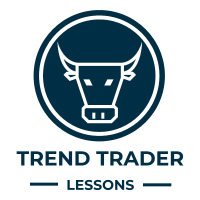Personality In Trading
Personality in trading is very underrated, and if not taken seriously, it can lead to poor performance. Vice versa, if it's harnessed correctly, it can lead to much more consistent results.
What do I mean by personality?
Personality in trading means what style of trading resonates with you and allows you to remain happy, and in a good frame of mind. It's similar to when you're a kid and you try out a few different sports, instruments or friend groups. With some of these it clicks, you feel comfortable and want to persist, whereas with others it's not so comfortable and hard to follow through.
Finding this sweet spot in trading is no different. So, how do you determine your style? Well that varies from person to person, and i believe the best way to move forward is pick a style you think you are suited towards and begin with trial and error. It is through this process where you will discover what works for you and this may take time.
For three years, i traded a longer term style in which i was consistently profitable, however, i found it extremely difficult to stick to the plan when my plan told me to hold through very deep corrections. While this sometimes paid off with big winners, my mindset was completely worn down after giving back large open profits on multiple occasions. This process of self discovery made me realise that this type of longer term trading was not conducive to my personality, and I needed to reduce my holding period in order to take profits on a more regular basis. As i begun to implement these parameters into my trading, I found i was often in a more relaxed state of mind because i wouldn't hold through large corrections.
The most important part of my personality in trading is that i like to remain in control. Now I realise that I cannot control the outcome of a trade, but i can try and control the risk of the trade as much as possible. This will ensure I remain in a good frame of mind. What do I mean by this? Well if i enter a trade and risk $1,000 (entry price to stop loss point), I want to make sure I don't lose more than $1,000. The $1,000 loss is my control point. I know it will be annoying to lose an outright amount of $1,000, but i don't want to lose anymore than that if I can avoid it. Why is that? Because if I let the loss grow bigger than $1,000, I will begin to fall out of my comfortable personality zone where I feel in control. Once you enter that zone, your mind will begin to wonder to other areas where it shouldn't. Now, I cannot help if a stocks gaps down unexpectedly past the point of my $1,000 loss point, but that needs to be taken into account.
With each trade you take, you'll discover more about your personality in trading and this will tend to guide you in the right direction, namely how you control your risk, your risk tolerance, where you like to take profits and so forth. Everyone is different, and you need to adjust your trading to suit your personality in order to achieve consistency.











